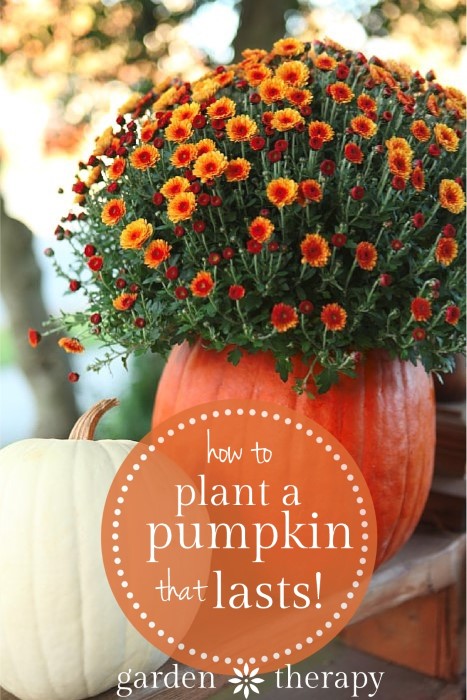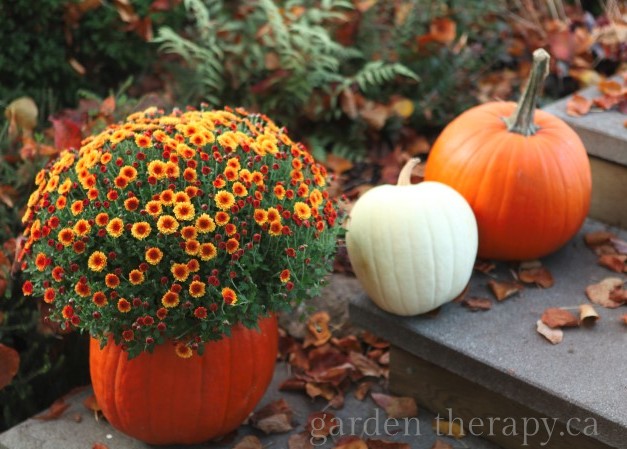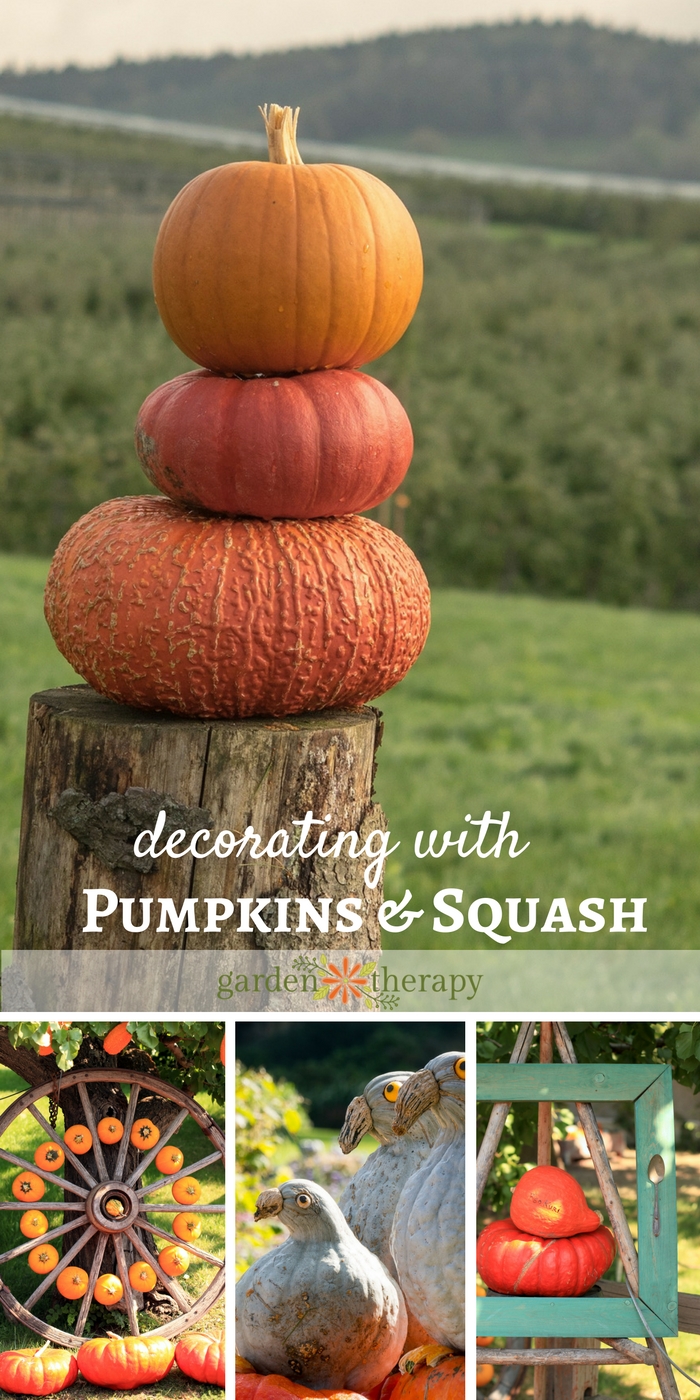Planted pumpkins make festive fall containers for autumn flowers with stunning arrangements set off by vibrant colors. They are simple to make and worth the wow factor, as long as you can keep them looking fresh for more than a week. As much as these planted pumpkins make for gorgeous decor, nobody likes a moldy pumpkin arrangement! So, what can you do to make them last? I have done the research and will share my tips on how to make planted pumpkins last this season.

I make pumpkin planters every year (like these ones) and they last for at least a month. Sometimes they last a bit longer but for me, a month of a good-looking outdoor arrangement is just perfect. I’m ready to transplant the flowers and compost the pumpkin by then, and move on to other holiday projects. And frankly, tossing the pumpkin in the compost bin is a lot less work than cleaning and storing outdoor containers.
First, (and this seems to be a pretty good rule of thumb for making most perishables last), pick the freshest pumpkin you can. Choose one with no soft spots, visible mold, browning…you get it. A firm, clean pumpkin from a farm or one that feels cool to the touch (meaning it has been in cold storage at some point since harvest) will give you the longest-lasting pumpkin.
Next, don’t fuss with those rumored preservation methods: bleach, white glue, petroleum jelly, and even jack-o-lantern preservative spray. There have been plenty of home studies (like this one) that show they are no more effective than just leaving the pumpkin as is. I have even tried spritzing the cut parts of the pumpkin with food-grade hydrogen peroxide (the same that I use to prevent mold growth on my sprouts) and have had no more success than leaving it the heck alone! Plus, when you add all that junk, you can no longer compost your pumpkin, meaning no nutritious, soil-amending pumpkin in your garden compost.
Then we must discuss climate. I live in Vancouver, BC (zone 7-8) and it rains a lot here. It’s warmer than the rest of the country with mild fall days and cool nights. I find that a pumpkin planter set out on October 1st will last until October 31st (great timing for Jack-o-Planterns). September pumpkins don’t last as long because it is much warmer. I can’t say how that relates to other climates, but you can use this as a guide for figuring out your area.
Don’t forget location, location, location. If you put your pumpkin in the hot sun, pouring rain, or freezing snow what do you think will happen to it? The sun will accelerate decomposition. The rain will promote rot. And the snow, well, it may actually preserve the pumpkin if it sticks around. If it freezes, thaws, freezes, thaws, etc, then you will quickly have a pumpkin puddle. Display your planter in a covered area, outdoors in cool weather, out of direct sunlight and you will have a great chance of extending its life.

Still not buying it? Well, here’s an idea: forget about pumpkins! Try ornamental squash instead. They look a lot like mini pumpkins and are much much firmer and harder to break down. These are usually the ones I cut up for inside the house where the climate is not at all suitable for softer squash.
Now, let’s not harsh on pumpkins too much here for doing their job. I mean, they have to break down a lot of stuff to get those seeds to the soil, planted and ready for next year. Sure, there aren’t many wild pumpkin populations out there and squash today greatly requires our help to reproduce. It’s just something to think about when you are feeling frustrated with a rotten pumpkin. If they really get you down, then grab a plastic one. They are zero maintenance!
Now, go check out these Jack-o-Planterns and other outdoor pumpkin decorating ideas.

Original article and pictures take gardentherapy.ca site
Комментариев нет:
Отправить комментарий